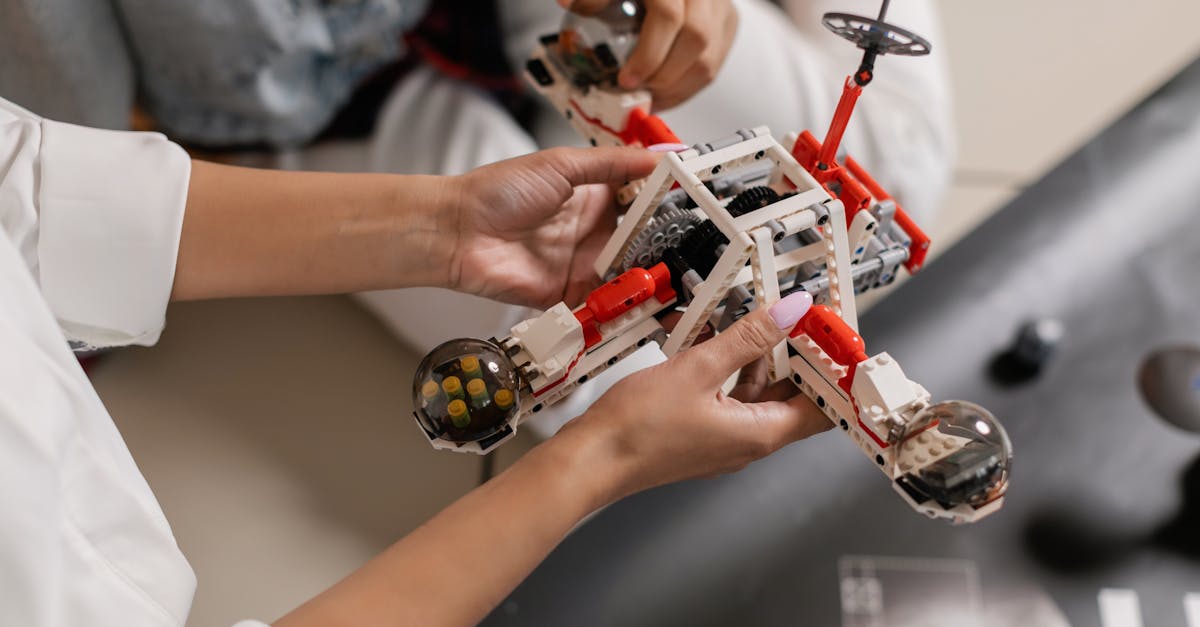Reinforcement learning (RL) is a powerful machine learning technique that has gained significant attention in the field of robotics. This approach, inspired by the way animals learn through trial and error, has demonstrated remarkable potential in enabling robots to adapt and learn complex tasks in dynamic environments. In this comprehensive article, we will explore the intersection of reinforcement learning and robotics, delving into the fundamentals, applications, challenges, and future directions of this exciting field.
Introduction to Reinforcement Learning
Reinforcement learning is a form of machine learning where an agent, such as a robot, learns by interacting with its environment. The agent takes actions and receives feedback in the form of rewards or penalties, which it then uses to update its behavior and improve its performance over time. This learning process is often likened to how animals and humans learn, where they receive positive or negative reinforcement based on the consequences of their actions.
The Reinforcement Learning Process
The core reinforcement learning process involves an agent, an environment, and a set of actions the agent can take. The agent observes the current state of the environment, selects an action, and receives a reward or penalty based on the outcome of that action. The agent then uses this feedback to update its understanding of the environment and refine its decision-making process, ultimately learning to take actions that maximize the cumulative reward.
Key Components of Reinforcement Learning
- State: The current condition or situation of the environment, which the agent perceives and uses to make decisions.
- Action: The choices the agent can make to interact with the environment.
- Reward: The feedback the agent receives from the environment, indicating the desirability of the outcome of its actions.
- Policy: The decision-making strategy the agent uses to select actions based on the current state.
- Value Function: The estimated long-term expected reward for being in a particular state or taking a particular action.
Learning Algorithms in Reinforcement Learning
There are several algorithms and techniques used in reinforcement learning, each with its own strengths and weaknesses. Some of the most prominent algorithms include:
- Q-Learning: A model-free algorithm that learns the value of taking specific actions in a given state.
- Policy Gradient Methods: Algorithms that directly optimize the policy, such as REINFORCE and Proximal Policy Optimization (PPO).
- Actor-Critic Methods: Algorithms that combine policy-based and value-based approaches, such as Advantage Actor-Critic (A2C) and Asynchronous Advantage Actor-Critic (A3C).
- Deep Reinforcement Learning: Reinforcement learning algorithms that use deep neural networks to approximate the policy or value function, such as Deep Q-Network (DQN) and Dueling DQN.
Basics of Robotics
Robotics is a field of engineering that involves the design, construction, and operation of robots, which are machines capable of performing a wide range of tasks with varying degrees of autonomy. Robots are used in a variety of applications, from manufacturing and healthcare to exploration and entertainment.
Components of a Robot
A typical robot consists of several key components:
- Mechanical Structure: The physical body of the robot, including the frame, joints, and actuators.
- Sensors: Devices that gather information about the robot’s environment, such as cameras, touch sensors, and proximity sensors.
- Control System: The software and hardware that process sensor data, make decisions, and control the robot’s actions.
- Power Source: The energy source that powers the robot’s components, such as batteries or electrical power.
Types of Robots
Robots can be classified into different categories based on their design, functionality, and application. Some common types of robots include:
- Manipulator Robots: Robots with articulated arms used for tasks such as assembly, packaging, and material handling.
- Mobile Robots: Robots that can move around their environment, such as wheeled, tracked, or legged robots.
- Humanoid Robots: Robots that are designed to mimic the physical appearance and capabilities of humans.
- Aerial Robots: Robots that can fly, such as drones and quadcopters.
- Underwater Robots: Robots designed to operate in aquatic environments, like autonomous underwater vehicles (AUVs).
Challenges in Robotics
Robotics faces several challenges, including:
- Uncertainty and Unpredictability: Robots must operate in complex, dynamic environments that are often uncertain and unpredictable.
- Sensor Limitations: Sensors can be imperfect, noisy, or have limited range, which can make it difficult for robots to accurately perceive their environment.
- Control and Coordination: Coordinating the various components of a robot and ensuring smooth, efficient operation can be a significant challenge.
- Adaptability and Flexibility: Robots must be able to adapt to new situations and environments, which can be difficult to achieve.
Applications of Reinforcement Learning in Robotics
Reinforcement learning has shown great promise in solving a wide range of problems in robotics, from low-level control tasks to high-level decision-making and planning. Here are some key applications of reinforcement learning in robotics:
Robotic Manipulation and Control
One of the primary applications of reinforcement learning in robotics is in the area of robotic manipulation and control. Reinforcement learning can be used to train robots to perform complex manipulation tasks, such as grasping and object handling, by learning optimal control policies through trial and error.
Dexterous Manipulation
Reinforcement learning has been used to train robots to perform dexterous manipulation tasks, such as in-hand object manipulation and multi-fingered grasping. By learning from feedback and rewards, robots can develop the necessary skills to manipulate objects with high precision and dexterity.
Locomotion and Navigation
Reinforcement learning has also been applied to the problem of robotic locomotion and navigation. Robots can learn to navigate through complex environments, avoid obstacles, and optimize their movement strategies using reinforcement learning algorithms.
Collaborative Robotics
Reinforcement learning can be used to enable robots to work collaboratively with humans, learning to anticipate and adapt to human behaviors and preferences to improve teamwork and task completion.
Robotic Decision-Making and Planning
Reinforcement learning can also be applied to higher-level decision-making and planning tasks in robotics, such as task planning, resource allocation, and behavior selection.
Task Planning and Scheduling
Reinforcement learning can be used to optimize task planning and scheduling for robots, enabling them to learn the most efficient ways to complete a series of tasks in a dynamic environment.
Behavior Selection and Adaptation
Reinforcement learning can help robots learn to select and adapt their behaviors based on the current situation, allowing them to respond to changing environments and tasks more effectively.
Multi-Robot Coordination
Reinforcement learning can be used to coordinate the actions of multiple robots working together, enabling them to learn optimal strategies for task allocation, communication, and cooperation.
Robotic Exploration and Mapping
Reinforcement learning can also be applied to robotic exploration and mapping tasks, where robots must learn to navigate and build representations of their environment.
Simultaneous Localization and Mapping (SLAM)
Reinforcement learning can be used to help robots simultaneously localize themselves and map their surroundings, improving the accuracy and efficiency of SLAM algorithms.
Autonomous Exploration and Coverage
Reinforcement learning can enable robots to learn efficient strategies for exploring and covering unknown environments, such as search and rescue operations or environmental monitoring.
Robotic Learning from Demonstration
Reinforcement learning can be combined with other learning techniques, such as learning from demonstration, to enable robots to learn complex skills more efficiently.
Imitation Learning
Reinforcement learning can be used to refine and optimize behaviors that are initially learned through imitation of human demonstrations, allowing robots to adapt and improve their performance.
Inverse Reinforcement Learning
Inverse reinforcement learning techniques can be used to infer the reward function that underlies human demonstrations, allowing robots to learn policies that mimic human behavior.
Challenges and Limitations

While reinforcement learning has shown great promise in the field of robotics, there are also several challenges and limitations that must be addressed:
Sample Efficiency
Reinforcement learning algorithms can be data-hungry, requiring a large number of interactions with the environment to learn effective policies. This can be a significant challenge in robotics, where real-world interactions can be expensive and time-consuming.
Exploration vs. Exploitation
Reinforcement learning algorithms must balance the exploration of new actions and behaviors with the exploitation of known successful strategies. This can be particularly challenging in complex, dynamic environments where the optimal policy may change over time.
Partial Observability and Uncertainty
Robots often operate in environments with incomplete or noisy sensor information, making it difficult for reinforcement learning algorithms to accurately model the state of the environment and learn effective policies.
Safety and Robustness
Reinforcement learning algorithms must be designed to ensure the safety and reliability of robotic systems, especially when operating in high-risk environments or around humans.
Scalability and Generalization
As the complexity of robotic systems and the environments they operate in increases, it can be challenging for reinforcement learning algorithms to scale and generalize their learned policies to new situations.
Interpretability and Explainability
The black-box nature of many reinforcement learning algorithms can make it difficult to understand and interpret the decision-making processes of robotic systems, which can be a barrier to deployment in critical applications.
Future Directions and Trends
Despite the current challenges, the field of reinforcement learning in robotics is rapidly evolving, and there are several promising directions and trends that are likely to shape the future of this field:
Sample-Efficient Reinforcement Learning
Researchers are actively working on developing more sample-efficient reinforcement learning algorithms, which can learn effective policies with fewer interactions with the environment. This may involve combining reinforcement learning with other learning techniques, such as imitation learning or meta-learning.
Hierarchical and Modular Reinforcement Learning
Reinforcement learning algorithms are being designed to operate at multiple levels of abstraction, with high-level decision-making and low-level control working together to solve complex robotic tasks.
Sim-to-Real Transfer
Techniques are being developed to enable the seamless transfer of policies learned in simulation to real-world robotic systems, reducing the need for extensive real-world data collection.
Safe and Robust Reinforcement Learning
Researchers are exploring ways to design reinforcement learning algorithms that can reliably and safely operate in dynamic, uncertain environments, with a focus on verifiability and interpretability.
Lifelong and Continual Learning
Reinforcement learning algorithms are being extended to enable robots to continuously learn and adapt to new situations and tasks, rather than being limited to a fixed set of behaviors.
Multimodal Perception and Reasoning
The integration of reinforcement learning with advanced perception and reasoning capabilities, such as multimodal sensor fusion and high-level reasoning, is expected to enable more versatile and capable robotic systems.
Ethical and Societal Considerations
As reinforcement learning in robotics becomes more prevalent, there is an increasing focus on the ethical and societal implications of these technologies, including issues of safety, bias, and transparency.
Conclusion

Reinforcement learning has emerged as a powerful tool for enabling robots to learn and adapt to complex environments, opening up new possibilities for robotic applications. By combining the principles of reinforcement learning with the unique challenges and requirements of robotics, researchers and engineers are pushing the boundaries of what is possible in this exciting field.
As the field of reinforcement learning in robotics continues to evolve, we can expect to see increasingly capable, adaptable, and socially responsible robotic systems that can tackle a wide range of tasks and environments. With a focus on addressing the current challenges and harnessing the latest advancements in related fields, the future of reinforcement learning in robotics promises to be both exciting and transformative.


